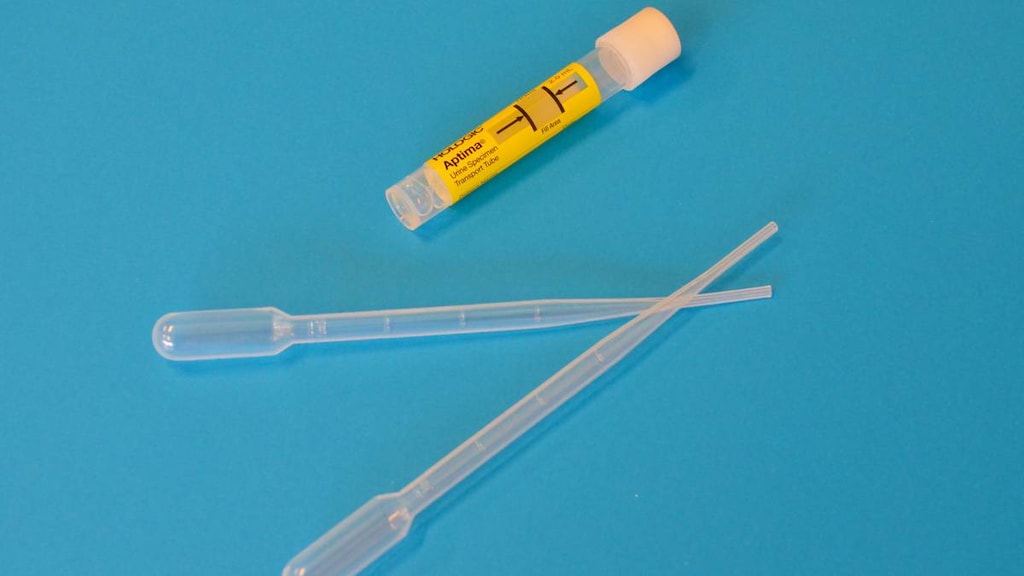Dosage Forms
Excipient information presented when available (limited, particularly for generics); consult specific product labeling. [DSC] = Discontinued product
Solution Reconstituted, Injection:
Generic: 10 g (1 ea [DSC])
Solution Reconstituted, Injection [preservative free]:
Generic: 10 g (1 ea)
Solution Reconstituted, Intravenous:
Generic: 2 g (1 ea)
Solution Reconstituted, Intravenous [preservative free]:
Generic: 1 g (1 ea); 2 g (1 ea)
Pharmacology
Mechanism of Action
Inhibits bacterial cell wall synthesis by binding to one or more of the penicillin-binding proteins (PBPs) which in turn inhibits the final transpeptidation step of peptidoglycan synthesis in bacterial cell walls, thus inhibiting cell wall biosynthesis. Bacteria eventually lyse due to ongoing activity of cell wall autolytic enzymes (autolysins and murein hydrolases) while cell wall assembly is arrested.
Pharmacokinetics/Pharmacodynamics
Distribution
Widely to body tissues and fluids including ascitic, pleural, synovial, bile; poorly penetrates into CSF even with inflammation of the meninges (Landesman 1981)
Excretion
Urine (85% as unchanged drug)
Time to Peak
Serum: IM: Within 20-30 minutes
Half-Life Elimination
Neonates and Infants (PNA: 10-53 days): 1.4 hours (Regazzi 1983); Adults: 41-59 minutes; prolonged with renal impairment
Protein Binding
65% to 79%
Use: Labeled Indications
Bacteremia/sepsis: Treatment of bacteremia/sepsis caused by Streptococcus pneumoniae, Staphylococcus aureus (including penicillinase-producing strains), Escherichia coli, Klebsiella species, and Bacteroides species including B. fragilis.
Bone and joint infections: Treatment of bone and joint infections caused by S. aureus (including penicillinase-producing strains).
Gynecological infections: Treatment of endometritis, pelvic cellulitis, and pelvic inflammatory disease caused by E. coli, Neisseria gonorrhoeae (including penicillinase-producing strains), Bacteroides species including Bacteroides fragilis, Clostridium species, P. niger, Peptostreptococcus species, and Streptococcus agalactiae.
Limitations of use: Cefoxitin does not have activity against Chlamydia trachomatis. When cefoxitin is used to treat pelvic inflammatory disease, add appropriate antichlamydial coverage.
Lower respiratory tract infections: Treatment of pneumonia and lung abscess, caused by S. pneumoniae, other streptococci (excluding enterococci; eg, Enterococcus faecalis [formerly Streptococcus faecalis]), S. aureus (including penicillinase-producing strains), E. coli, Klebsiella species, Haemophilus influenzae, and Bacteroides species.
Septicemia: Treatment of septicemia caused by S. pneumoniae, S. aureus (including penicillinase-producing strains), E. coli, Klebsiella species, and Bacteroides species including B. fragilis.
Skin and skin structure infections: Treatment of skin and skin structure infections caused by S. aureus (including penicillinase-producing strains), Staphylococcus epidermidis, Streptococcus pyogenes and other streptococci (excluding enterococci [eg, E. faecalis] [formerly S. faecalis]), E. coli, Proteus mirabilis, Klebsiella species, Bacteroides species including B. fragilis, Clostridium species, P. niger, and Peptostreptococcus species.
Urinary tract infections: Treatment of UTIs caused by E. coli, Klebsiella species, P. mirabilis, Morganella morganii, Proteus vulgaris, and Providencia species (including Providencia rettgeri).
Use: Off Label
Bite wounds (animal)yes
Based on the Infectious Diseases Society of America (IDSA) guidelines for the diagnosis and management of skin and soft tissue infections (SSTI), cefoxitin is an effective and recommended option for treatment of animal bites.
Nontuberculous mycobacterial diseaseyes
Based on the American Thoracic Society (ATS) and Infectious Diseases Society of America (IDSA) guideline for the diagnosis, treatment, and prevention of nontuberculous mycobacterial disease, cefoxitin, as part of a multidrug regimen, is an effective and recommended option for the treatment of susceptible nontuberculous mycobacterial disease.
Contraindications
Hypersensitivity to cefoxitin, any component of the formulation, or other cephalosporins
Dosage and Administration
Dosing: Adult
Usual dosage range: IV: 1 to 2 g every 6 to 8 hours.
Bite wounds (animal) (off-label use): IV: 1 g every 6 to 8 hours (IDSA [Stevens 2014]).
Nontuberculous mycobacterial disease (off-label use): IV:
M. abscessus complex (pulmonary, serious nonpulmonary disease): 12 g/day in divided doses (eg, 2 g every 4 hours or 3 g every 6 hours) as part of an appropriate combination regimen; duration varies based on site of infection (ATS/IDSA [Griffith 2007]).
M. abscessus complex (cystic fibrosis patients): 200 mg/kg/day in 3 divided doses (maximum daily dosage: 12 g/day) for 3 to 12 weeks as part of an appropriate combination regimen (Floto 2016).
Pelvic inflammatory disease (CDC [Workowski 2015]):
Inpatients: IV: 2 g every 6 hours plus doxycycline for at least 24 to 48 hours after clinical improvement, followed by oral doxycycline to complete 14 days.
Outpatients: IM: 2 g as a single dose plus oral probenecid, followed by oral doxycycline (with or without concomitant metronidazole) for 14 days.
Surgical (perioperative) prophylaxis: IV: 2 g within 60 minutes prior to surgical incision. Doses may be repeated in 2 hours if procedure is lengthy or if there is excessive blood loss (Bratzler 2013).
Dosing: Geriatric
Refer to adult dosing.
Dosing: Pediatric
General dosing, susceptible infection (Red Book [AAP 2012]): Infants, Children, and Adolescents: IM, IV:
Mild to moderate infection: 80 mg/kg/day divided every 6 to 8 hours; maximum daily dose: 4,000 mg/day
Severe infection: 160 mg/kg/day divided every 6 hours; maximum daily dose: 12 g/day
Manufacturer's labeling: Infants ≥3 months, Children, and Adolescents: 80 to 160 mg/kg/day divided every 4 to 6 hours; maximum daily dose: 12 g/day
Intra-abdominal infections, complicated: Infants, Children, and Adolescents: IV: 160 mg/kg/day divided every 4 to 6 hours; maximum daily dose: 8 g/day (Solomkin 2010)
Peritonitis, prophylaxis for patients receiving peritoneal dialysis undergoing gastrointestinal or genitourinary procedures: Limited data available: Infants, Children, and Adolescents: IV: 30 to 40 mg/kg administered 30 to 60 minutes before procedure; maximum dose: 2,000 mg/dose (Warady [ISPD 2012])
Surgical prophylaxis: IV:
Manufacturer's labeling: Infants ≥3 months, Children, and Adolescents: 30 to 40 mg/kg 30 to 60 minutes prior to initial incision, followed by 30 to 40 mg/kg every 6 hours for up to 24 hours; maximum single dose: 2,000 mg
Alternate dosing (ASHP guidelines, endorsed by IDSA): Children and Adolescents: 40 mg/kg within 60 minutes prior to surgery; may repeat in 2 hours if procedure is lengthy or if there is excessive blood loss; maximum single dose: 2,000 mg (Bratzler 2013; Red Book [AAP 2012])
Reconstitution
Reconstitute vials with SWFI, bacteriostatic water for injection, NS, or D5W. For IV infusion, solutions may be further diluted in NS, D51/4NS, D51/2NS, D5NS, D5W, D10W, LR, D5LR, mannitol 5% or 10%, or sodium bicarbonate 5%.
Administration
IM: Inject deep IM into large muscle mass. Note: IM injection is painful and this route of administration is not described in the prescribing information.
IV: Can be administered IVP over 3 to 5 minutes or by IV intermittent infusion over 10 to 60 minutes
Dietary Considerations
Some products may contain sodium.
Storage
Prior to reconstitution store between 2°C and 25°C (36°F and 77°F). Avoid exposure to temperatures >50°C (122°F). Cefoxitin tends to darken depending on storage conditions; however, product potency is not adversely affected.
Reconstituted solutions of 1 g per 10 mL in sterile water for injection, bacteriostatic water for injection, sodium chloride 0.9% injection, or dextrose 5% injection are stable for 6 hours at room temperature or for 7 days under refrigeration (<5°C [43°F]).
DUPLEX container: Store unactivated container at 20°C to 25°C (68°F to 77°F); excursions permitted to 15°C to 30°C (59°F to 86°F); do not freeze. Following activation, solution is stable for 12 hours at room temperature and 7 days refrigerated.
Drug Interactions
Aminoglycosides: Cephalosporins (2nd Generation) may enhance the nephrotoxic effect of Aminoglycosides. Monitor therapy
BCG (Intravesical): Antibiotics may diminish the therapeutic effect of BCG (Intravesical). Avoid combination
BCG Vaccine (Immunization): Antibiotics may diminish the therapeutic effect of BCG Vaccine (Immunization). Monitor therapy
Cholera Vaccine: Antibiotics may diminish the therapeutic effect of Cholera Vaccine. Management: Avoid cholera vaccine in patients receiving systemic antibiotics, and within 14 days following the use of oral or parenteral antibiotics. Avoid combination
Lactobacillus and Estriol: Antibiotics may diminish the therapeutic effect of Lactobacillus and Estriol. Monitor therapy
Probenecid: May increase the serum concentration of Cephalosporins. Monitor therapy
Sodium Picosulfate: Antibiotics may diminish the therapeutic effect of Sodium Picosulfate. Management: Consider using an alternative product for bowel cleansing prior to a colonoscopy in patients who have recently used or are concurrently using an antibiotic. Consider therapy modification
Typhoid Vaccine: Antibiotics may diminish the therapeutic effect of Typhoid Vaccine. Only the live attenuated Ty21a strain is affected. Management: Vaccination with live attenuated typhoid vaccine (Ty21a) should be avoided in patients being treated with systemic antibacterial agents. Use of this vaccine should be postponed until at least 3 days after cessation of antibacterial agents. Consider therapy modification
Vitamin K Antagonists (eg, warfarin): Cephalosporins may enhance the anticoagulant effect of Vitamin K Antagonists. Monitor therapy
Test Interactions
Positive direct Coombs', false-positive urinary glucose test using cupric sulfate (Benedict's solution, Clinitest®, Fehling's solution), false-positive serum or urine creatinine with Jaffé reaction
Adverse Reactions
1% to 10%: Gastrointestinal: Diarrhea
<1%: Anaphylaxis, angioedema, bone marrow depression, dyspnea, eosinophilia, exacerbation of myasthenia gravis, exfoliative dermatitis, fever, hemolytic anemia, hypotension, increased blood urea nitrogen, increased serum creatinine, increased serum transaminases, interstitial nephritis, jaundice, leukopenia, nausea, nephrotoxicity (increased; with aminoglycosides), phlebitis, prolonged prothrombin time, pruritus, pseudomembranous colitis, skin rash, thrombocytopenia, thrombophlebitis, toxic epidermal necrolysis, urticaria, vomiting
Warnings/Precautions
Concerns related to adverse effects:
- Hypersensitivity: Use with caution in patients with a history of penicillin allergy, especially IgE-mediated hypersensitivity reactions (eg, anaphylaxis, angioedema, urticaria). If a hypersensitivity reaction occurs, discontinue immediately.
- Superinfection: Prolonged use may result in fungal or bacterial superinfection, including C. difficile-associated diarrhea (CDAD) and pseudomembranous colitis; CDAD has been observed >2 months postantibiotic treatment.
Disease-related concerns:
- GI disease: Use with caution in patients with a history of gastrointestinal disease, particularly colitis.
- Renal impairment: Use with caution in patients with renal impairment; modify dosage in severe impairment.
- Seizure disorders: Use with caution in patients with a history of seizure disorder; high levels, particularly in the presence of renal impairment, may increase risk of seizures.
Special populations:
- Children: In pediatric patients ≥3 months of age, higher doses have been associated with an increased incidence of eosinophilia and elevated AST.
- Elderly: This drug is known to be substantially excreted by the kidney, and the risk of toxic reactions to this drug may be greater in patients with impaired renal function. Elderly patients are more likely to have decreased renal function; use care in dose selection and monitor renal function.
Other warnings/precautions:
- Discontinuation of therapy: For group A beta-hemolytic streptococcal infections, antimicrobial therapy should be given for at least 10 days to guard against the risk of rheumatic fever or glomerulonephritis.
Monitoring Parameters
Monitor renal function periodically when used in combination with other nephrotoxic drugs; prothrombin time. Observe for signs and symptoms of anaphylaxis during first dose.
Pregnancy
Pregnancy Considerations
Adverse events have not been observed in animal reproduction studies. Cefoxitin crosses the placenta and reaches the cord serum and amniotic fluid.
Peak serum concentrations of cefoxitin during pregnancy may be similar to or decreased compared to nonpregnant values. Maternal half-life may be shorter at term. Pregnancy-induced hypertension increases trough concentrations in the immediate postpartum period. Cefoxitin is one of the antibiotics recommended for prophylactic use prior to cesarean delivery.
Patient Education
What is this drug used for?
- It is used to treat or prevent bacterial infections.
Frequently reported side effects of this drug
- Diarrhea
- Injection site irritation
Other side effects of this drug: Talk with your doctor right away if you have any of these signs of:
- Kidney problems like unable to pass urine, blood in the urine, change in amount of urine passed, or weight gain.
- Myasthenia gravis like muscle weakness, difficulty chewing, difficulty swallowing, difficulty breathing, droopy eyelids, vision changes, blurred vision, or double vision.
- Bruising
- Bleeding
- Severe loss of strength and energy
- Chills
- Sore throat
- Seizures
- Flushing
- Shortness of breath
- Severe dizziness
- Passing out
- Dark urine
- Yellow skin
- Clostridioides (formerly Clostridium) difficile-associated diarrhea like abdominal pain or cramps, severe diarrhea or watery stools, or bloody stools (rare)
- Signs of a significant reaction like wheezing; chest tightness; fever; itching; bad cough; blue skin color; seizures; or swelling of face, lips, tongue, or throat.
Note: This is not a comprehensive list of all side effects. Talk to your doctor if you have questions.
Consumer Information Use and Disclaimer: This information should not be used to decide whether or not to take this medicine or any other medicine. Only the healthcare provider has the knowledge and training to decide which medicines are right for a specific patient. This information does not endorse any medicine as safe, effective, or approved for treating any patient or health condition. This is only a brief summary of general information about this medicine. It does NOT include all information about the possible uses, directions, warnings, precautions, interactions, adverse effects, or risks that may apply to this medicine. This information is not specific medical advice and does not replace information you receive from the healthcare provider. You must talk with the healthcare provider for complete information about the risks and benefits of using this medicine.




